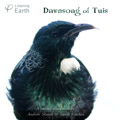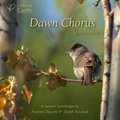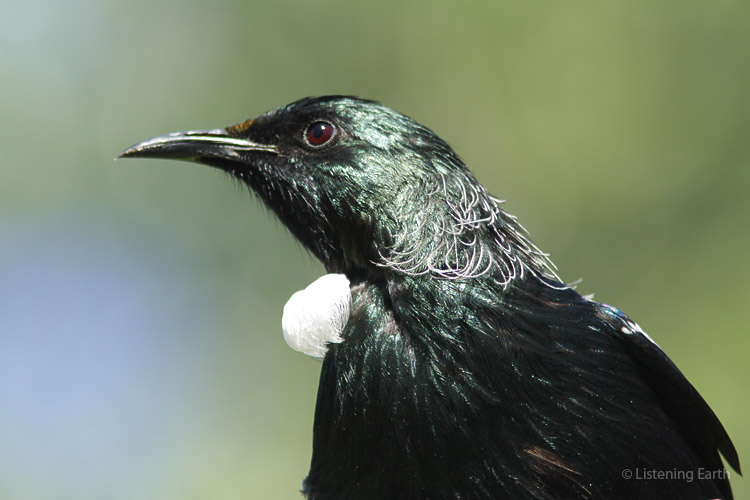

Running Time:
156 min
Release Date:
October 2018
Recording Location:
Tiritiri Matangi Island, off Auckland, New Zealand
If you like this album,
we also recommend:
Dawn Chorus: New Zealand
"This morn I was awakd by the singing of the birds ashore, from whence we are distant not a quarter of a mile. The numbers of them were certainly very great, who seemd to strain their throats with emulation perhaps; their voices were certainly the most melodious wild musick I have ever heard, almost imitating small bells, but with the most tuneable silver sound imaginable, to which maybe the distance was no small addition."
These are the words of Joseph Banks, botanist aboard Capt. Cook’s Endeavour, moored off the New Zealand coast on January 17, 1770.
The birdsong on this recording is likely very close to what was heard 250 years ago.
Can a whole dawn chorus become endangered? In New Zealand this has become a serious question, as the island's native birds have been decimated by predators introduced since colonisation, with some species lost altogether. Island sanctuaries are one of the remaining places one can hear New Zealand's natural dawn chorus in its splendor. And it was on one of these - Tiritiri Matangi - that this recording was made.
This album allows you to experience a complete and vibrant dawn chorus of New Zealand native birdsong.
We begin in its early phase when Tuis, Kiwis and owls call in the dark. The tinkling of Bellbirds arrives with first light, along with a full chorus of Whiteheads, Robins and other indigenous species. Afterwards, we listen on into a morning rich with native birdsong including Saddlebacks, Stitchbirds, and concluding with the rare calls of the Kokako.
Andrew comments:
"I was extraordinarily lucky with this recording. Prior to our visit, the spring weather had been foul, with strong winds and gloomy days. On the day we arrived on Tiritiri, the winds calmed and the sun came out, the first warm day of the season. Over the following mornings, the birds took their cue, and sung their hearts out.
"I chose my recording location carefully, selecting a well-vegetated gully on the island's northeast side. It was not only some of the best habitat on the island, but faced away from the mainland and any noise emanating from Auckland.
"A huge amount of volunteer effort has gone into restoring both the environment and bird populations of this small island. It has been a decades-long project. In visiting, we found we were in the company of locals who had also come simply to hear their own native dawn chorus. New Zealand is one of the few places in the world that I have found birdsong so appreciated."
Audio sample of this album
|
1. |
Tuis and Morepork Owl: Before the Dawn |
32.38 |
|
2. |
Bellbirds: The Dawn Chorus Begins |
17.36 |
|
3. |
Whiteheads and Stitchbirds: The Crescendo |
45.34 |
|
4. |
Saddlebacks: After the Chorus |
45.39 |
|
5. |
Kokakos: Into the Morning |
14.30 |
Purchase this
album as:
Digital Album
(for immediate download)
Download this album
for as little as
$7.50 -
View Special Deals
(Prices AU$, exGST)
Mp3:
Mp3 is a universal audio format, playable on iPods, computers, media players and mobile phones.
Mp3 is a compressed format, allowing smaller filesizes, offering faster download times and requiring less storage space on players, but at some expense to the audio quality. Many listeners can't really hear the difference between mp3 and full CD-quality audio, and hence its convenience has lead to it becoming the default option for audio.
Our albums are generally encoded at around 256kbps (sometimes with VBR), balancing optimal audio quality without blowing out filesizes excessively. We encode using the Fraunhoffer algorithm, which preserves more detail in the human audible range than the lame encoder.
Our mp3 files are free of any DRM (digital rights management), so you can transfer them to any of your media technology. You've paid for them, they're yours for your personal use without restriction.
Mp3 files can be burned to disc, either as an mp3 disc, or an audio CD after converting them to a standard audio (.wav or .aif) format first.
FLAC:
FLAC is a high-quality audio format, allowing CD-resolution audio. It is ideal if you wish to burn your files to a CDR, or listen over a high resolution audio system. However files usually require special decoding by the user before playing or burning to disc.
FLAC (Free Lossless Audio Codec) is a LOSSLESS compressed audio format. This means that it preserves the full audio quality of a CD, but optimises the filesize for downloading. Typically, file sizes of around 60% are achieved without any degradation or loss of audio quality from the source files at the CD standard of 16bit/44.1kHz.
Obviously the file sizes are larger than for the mp3 version - usually around 300-400Mb for an album, compared to 100Mb for an mp3 album.
In addition, you'll need to know what to do with the files once you've downloaded them. In most cases you'll want to decode the files to wav or aiff, either to import into programs like iTunes, or burn to CDR. Some programs will play flac files natively.
There is a lot of information about flac online (eg: http://flac.sourceforge.net/)





 Alternate audio link
Alternate audio link 